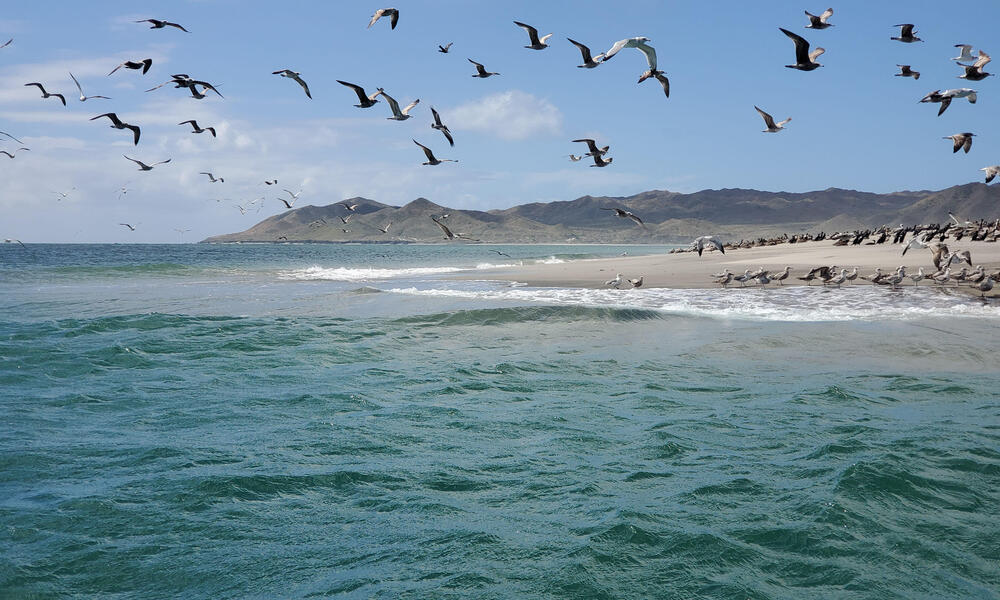La Boca de Soledad (The Mouth of Solitude) is a yawning gap in the barrier islands that separate Magdalena Bay, on the western coast of Mexico’s Baja Peninsula, from the Pacific Ocean. Here, the waters appear calm—smooth, even, depending on the winds that day. And just beneath the surface, giants roam.
We set out on our journey to this unique place in an inflatable Zodiac boat launched from an expedition ship. Mangroves clinging with their many roots to the shoreline we navigated along later gave way to wild dunes and shell-scattered beaches. As the waters opened more broadly, we began to spot the telltale sign of the creatures we sought: plumes of white, saltwater shooting high into the air—each one the dramatic exhale of a gray whale.
Every late winter and early spring, gray whales navigate to the protected bays of the Baja Peninsula, to mate or give birth to their young. They come in numbers so high that it is difficult not to spot one coming up for air in any given direction that you look. These waters are warm and shallow—ideal for nursing a newborn and showing them the ropes before the long, sometimes dangerous, migration north to the rich feeding grounds off the coast of Alaska. During this time, gray whale calves gain about 60 pounds per day from their mom’s fat-rich milk.
Baja’s protected bays are safe havens now, but that wasn’t always the case. In the mid-1800s and early 1900s, gray whales were hunted to the brink of extinction in Baja’s bays. Whale blubber provided oil for lamps and the shallow bays made the species easily accessible to hunters. Thanks to conservation efforts and protection from several international organizations, gray whale populations rebounded after the 1950s.

